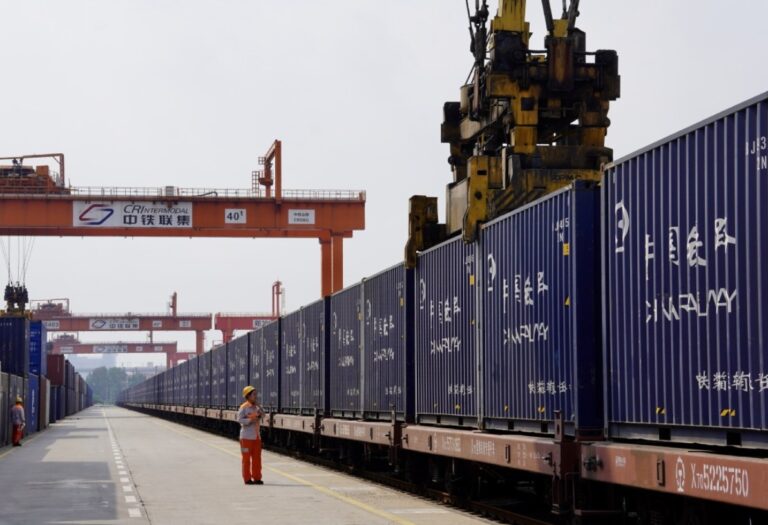Despite recent cataclysms and coups, Africa is a destination for investment and funding in the order of billions. Particularly from China, which has been focusing heavily on the African continent for years.
To the point of becoming its main trading partner in 2009, after decades of U.S. hegemony.
The reason for all this interest on the part of the People’s Republic of China in a continent like Africa is all relative to the number and type of assets it is now investing in, as well as the states with which the Dragon is doing business.
Table of Contents
What is the purpose of Chinese investment in Africa
Beijing has been engaging in trade with many African states for more than two decades now. Which has been so flourishing that bilateral trade has reached $254.3 billion.
A share that makes China Africa’s largest partner, after decades of the United States deciding the continent’s trade fortunes.
Becoming Africa’s new “master” allows it to control, in the long run, markets and production centers that may become necessary in a world increasingly focused on information technology and quality automotive.
In turn, with the risk of ending up with a demographic bomb at home in which there are more old people than young people in the workforce, having an incredible workforce in Africa. As well as ready-made resources and infrastructure. Which allows China to overcome its domestic problems without having to enact “heavy-handed” structural reforms for its own population.
The desire to invest in Africa at all costs also finds strength in the growing revulsion of African countries toward Old and New World countries.
What China is building in Africa: key assets
China is building in Africa not just simple mines for the extraction of raw materials, but real strategic infrastructure.
As much as Africa is a veritable mine of essential materials for the vast majority of today’s strategic sectors, with the Belt and Road Initiative plan, it would like to create a network of trade and financial routes that unites as many as three continents: Africa, Europe and Asia.
To enable this, all must be aligned with each other in terms of infrastructure. Same means, same quality and same complexity. Hence the urgency to build roads, telecommunication systems, railways, health facilities in Africa, and also to support the creation of stable enterprises, holding companies and domestic economies.
Stable but still subservient to China. In addition to contracts to exploit raw materials (from oil to gas to rare earths), to keep China’s leadership over these countries firmly in place, the Dragon has used two highly controversial financial strategies. Namely, land grabbing and lending.
The former involves the gradual grabbing of land. And, in particular, its resources, through privatization, acquisition and exploitation of large territories.
Chinese loans in Africa
Lacking strong bargaining power, many African states relinquish properties at very low prices. Thus giving China a way to be able to maintain its local production at its current levels.
The second, on the other hand, involves in granting poor or developing countries “soft” loans in the tens of billions, in order to develop quickly.
As Geopop reports, from 2000 to 2019, Chinese loans reached $153 billion in African states alone. Eighty percent of this financing is for infrastructure works, from energy to transportation to telecommunications.
As the economic stabilization process is notoriously long, however, China obtains as a default clause the obligation to hand over the financed public infrastructure to its control.
As much as a country can safely deny payment of a debt, especially one as capricious as this latest one, in such a situation it would be a fatal move, especially when holding a total trade dependency such as the one created with China.
Read also: This is how China throttles Africa: all about the BRI “debt trap”
Where China invests in Africa
To get to this level, however, China had to start much earlier than other economic players, and without even making big profits at first.
The first glimpses of Chinese influence on the continent are reported as early as the 1960s and 1970s, very tentative because of the Cold War and the bloc between the two superpowers of the time. Namely the USSR and the US.
It was only during the early years of the globalization era, at the beginning of the millennium, that its penetration into Africa was more incisive. Partly due to Beijing’s entry into the World Trade Organization (2001).
To date, the bulk of Chinese investment is not so much with the more resource-rich countries. Such as Nigeria, Equatorial Guinea, Namibia and South Africa.
But also with the poorer ones, such as Eritrea, Uganda, Sudan and Kenya. The reason is easily traced to the use of land grabbing and lending. In the case of the Republic of Djibouti, however, there is also a strongly geopolitical issue behind this move.
Commercial control and military bases
Consider that 2017 saw the opening of China’s first military base in the small but strategic Republic of Djibouti. This is a country nestled between Eritrea, Ethiopia, and Somalia and facing between the Red Sea and the Gulf of Aden. Opening brings to a climax a territorial control that began in 2008 as a matter of “anti-piracy maritime security.”
In reality it is the military base performs not only a function of supporting counterterrorism and peacekeeping operations. But also of commercial control, since the Bab el-Mandeb Strait, one of the bottlenecks of international trade routes, is nearby.
The problem here is that there are also other foreign bases in the area, such as French, Japanese, U.S., Italian. Indian and Arab ones could also be added in the future.
But with such a large concentration of bases in such a small area, the risk of the area becoming a powder keg is almost assured.












